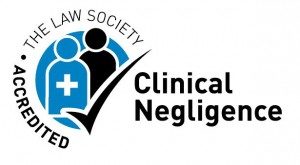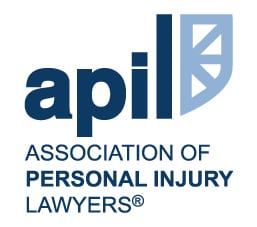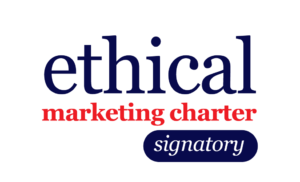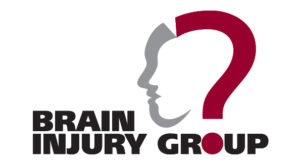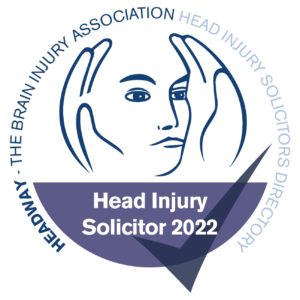There are a number of birth injury types. Sometimes birth injuries are temporary, others sadly may last a lifetime. Not all birth injuries are the result of medical negligence, but inevitably a significant proportion of such injuries could have been avoided with better and alternative treatment and can lead to a compensation claim.
At Lester Aldridge, our personal injury and medical negligence solicitors are highly experienced in investigating birth injury claims and in taking forward successful compensation claims. We know just how devastating a birth injury can be. It is all the worst when it has arisen as a result of medical negligence and was preventable. No amount of compensation can put things right but it can result in essential provision for the cost of care to support your child and meet their immediate and ongoing needs. We utilise our expertise to maximize any compensation award.
Birth injuries fall into two distinct categories:
- Birth Injury to the Mum
- Birth Injury to the Baby
Birth Injury to the Mum
Obstetrics is the field of medicine, which concentrates on pregnancy, childbirth, and the postpartum period. During pregnancy and at the time of delivery most of the care for low risk mothers and uncomplicated deliveries is undertaken by midwives, but approximately 35% of births are undertaken by an obstetrician, usually for more complex cases or in circumstances where a baby becomes distressed during labour.
Obstetric negligence is one of the major causes of medical negligence litigation. The areas in which errors are made that frequently result in medical negligence claims include:
- Management before pregnancy, including, counselling, infertility advice and treatment.
- Management during the pregnancy and before labour (antenatal), including: consent issues, the interpretation of scans designed to detect abnormalities in the unborn child, delay in diagnosis and management of an ectopic pregnancy, and failure to recognise and manage appropriately a high risk pregnancy, including pregnancy induced hypertension.
- Management during labour and delivery (intrapartum), including: interpretation of a cardiotocograph trace (CTG trace), choice of the method of delivery, including the use of forceps, and technical performance of the delivery, which may result in avoidable harm to mother and/or baby.
- Management immediately after delivery (postnatal) for example incorrectly sutured episiotomy.
Birth Injury to the Baby
Cerebral Palsy
Brain injuries often result from oxygen deprivation. Hypoxic ischemic Encephalopathy (HIE) is a birth injury that describes starvation to the brain and the consequences that result from oxygen deprivation.
The most common brain-related injury at birth is cerebral palsy (CP). CP can develop after maternal infections, oxygen deprivation, infant stroke, infant infections. In many cases, CP could have been avoided with better and alternative treatment and care. Common examples include:
- Failure to monitor, detect and treat maternal infections
- Failure to plan and carry out an emergency caesarean section
- Failure to monitor fetal distress and facilitate an earlier delivery
- Failure to identify and treat a prolapsed umbilical cord
- Failure to use birth assisting tools such as forceps correctly
Brachial Plexus
Brachial plexus injuries happen when the upper extremity of the arm is injured, usually during delivery. Symptoms include weakness in the affected arm and the inability to use certain muscles in the affected arm. The shoulder and hand may also be affected. A brachial plexus injury can result from medical negligence in circumstances where a doctor or midwife applies excessive force. Other examples include where the labour is mismanaged and prolonged and the baby is stuck in the birth canal, in such circumstances, the mother’s own contractions can place stress on the baby’s shoulders, head and upper arms leading to injury
Erb’s Palsy
Erb’s palsy is a form of brachial plexus marked by the nerves of the upper arm being affected, usually after a birth injury. Infants with Erb’s palsy may experience a loss of feeling and weakness in the affected arm. In severe cases, infants may have total paralysis of the affected arm. Erb’s palsy can result from difficult labour. The baby passes through the birth canal at an awkward angle. Medical negligence can occur when there is excessive pulling on the shoulders when the baby is delivered.
Shoulder Dystocia
Shoulder dystocia is a birth injury that occurs when an infant’s head and shoulders get trapped behind the mother’s pelvic bone during delivery. Although shoulder dystocia is relatively rare, the complications that can arise with this type of birth injury can be severe. Medical negligence can arise in a number of ways to include cases where arguments regarding informed consent may arise where there is a diabetic mother or large baby; a failure to diagnose the condition; where excessive or inappropriate traction is used; where there is a failure to summon help; where there is a failure to carry out all appropriate specialist manoeuvers to facilitate delivery.
Infections
In some instances, a birth injury can result from an infection passed on by the mother. Examples include Group B strep infection or meningitis. Other birth injuries that can result from the mother are injuries that develop during pregnancy that potentially the clinicians should have tested for or found earlier. In some cases (but not all), it is possible to allege that the injury could have been prevented by diagnosis and treatment during pregnancy.
Meconium Aspiration Syndrome
This is a birth injury that can happen at the end of pregnancy just prior to delivery. This infant is under stress as a result of a long and difficult delivery and defecates in the uterus and then breathes in the meconium, causing severe breathing problems after birth. Common reasons for medical negligence claims include circumstances where there was a failure to diagnose meconium aspiration syndrome at birth or to treat in a timely fashion.
Injuries from Delivery
Birth injuries may result from the use of a vacuum extractor or forceps, tools designed to assist in delivery. Other injuries may result from administering the wrong medication, mishandling the infant, stress, high blood pressure, or hypertension to give but a few examples.
Persistent Pulmonary Hypertension of the Newborn
PPHN occurs when the pulmonary artery responsible for delivering oxygen to a newborn shuts down. In turn, the infant has a difficult time breathing. PPHN is often the result of a difficult birth and can arise due to medical negligence. Examples include certain prescription-based medications if taken during pregnancy, failure to treat maternal infections and a failure to detect and prevent infant asphyxia. Common reasons for medical negligence include cases where there is a failure to diagnose PPHN at birth, a failure to treat in a timely fashion and a failure to provide all appropriate treatment.
Stillbirths and Neonatal Deaths
When a baby dies it is always extremely traumatic for those involved. A stillbirth occurs when death occurs at any time after 24 weeks of pregnancy. If death occurs before that date and a baby is delivered dead, it is considered a miscarriage. In contrast, a neonatal death is a term used to describe the death of a baby which occurs in the first 28 days of the baby’s life.
There can be any number of reasons why a stillbirth or neonatal death may occur and it can happen without negligence. In some cases, however, death could and should have been avoided.
Stillbirth Negligence
Examples include cases where there has been:
- Failure to carry out regular checks and identify pregnancy complications
- Failure to admit for close monitoring and facilitate earlier delivery
- Failure to identify and treat raised blood pressure in mum
- Birth trauma or a lack of oxygen to the baby during birth.
Neonatal Death Claims
Examples include cases where there has been:
- Failure to manage the care of a small baby before birth
- Poor monitoring during labour resulting in fetal distress and death
- Untreated infections
- Poor resuscitation at birth
Our personal injury and medical negligence solicitors are extremely knowledgable in investigating birth injury claims and in taking forward successful compensation claims. Please email online.enquiries@la-law.com or call 01202 786260 to discuss your case.








